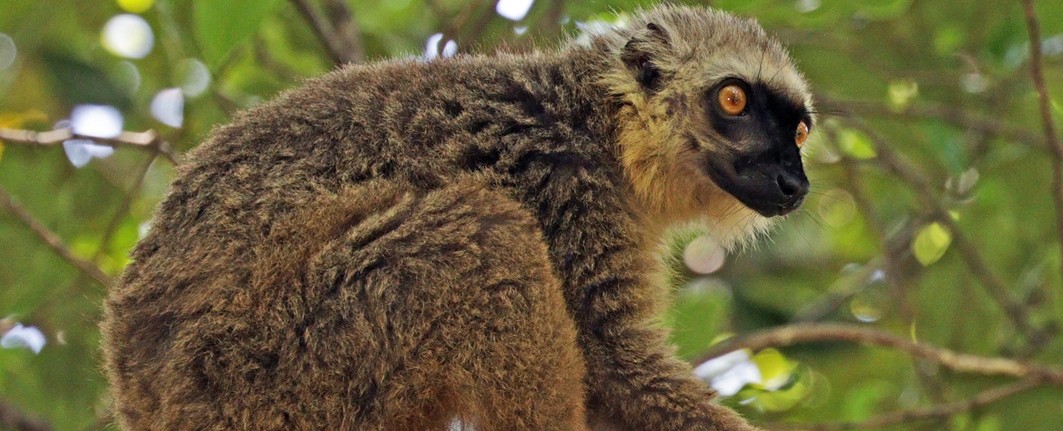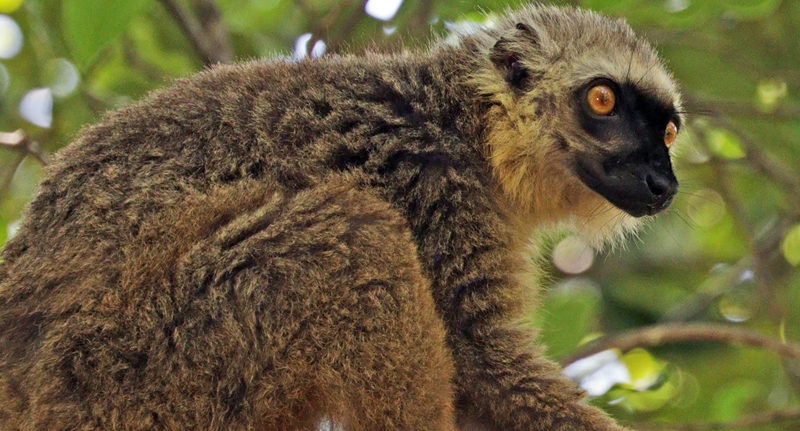
Madagascar Common Brown Lemurs: The Ultimate Wildlife Guide
Madagascar is one of the most extraordinary wildlife destinations on Earth, boasting flora and fauna found nowhere else in the world. Among its most iconic and fascinating residents are the Madagascar common brown lemurs. These medium-sized primates captivate tourists, researchers, and wildlife photographers alike. Understanding their behavior, habitat, diet, and conservation needs makes them even more remarkable. In this comprehensive guide, we explore everything you need to know about Madagascar common brown lemurs, including where to see them, their unique social behavior, and why they are a must-see for visitors to Madagascar.
What Are Madagascar Common Brown Lemurs?
Madagascar common brown lemurs belong to the genus Eulemur, which is part of the ‘true lemur’ family. Within this genus, there are 12 recognized species, and eight of these are often encountered by visitors to Madagascar. Over the years, taxonomists have identified new species that were once considered subspecies of brown lemurs, reflecting the growing interest in their study.
Brown lemurs are medium-sized primates with a strong social structure. One of their most fascinating features is the distinct sexual dimorphism: males and females of most species have strikingly different coloration. This makes observing and identifying them in the wild easier and more interesting for nature enthusiasts.
Key characteristics of Madagascar common brown lemurs:
-
Medium size: Typically weighing between 2–3 kilograms (4–7 pounds).
-
Distinct male and female coloration: Males often display white facial tufts or darker fur, while females are usually more subdued in color.
-
Vocal communication: Guttural grunts and squeals allow them to communicate within their group.
-
Dietary flexibility: Mainly frugivorous, but also consuming leaves, flowers, and small animals.
-
Diurnal and nocturnal activity: Active both during the day and occasionally at night.
By learning to recognize these traits, visitors can enjoy a more immersive experience when spotting lemurs in their natural habitat.
Distribution and Habitat of Madagascar Common Brown Lemurs
Madagascar common brown lemurs inhabit a variety of ecosystems across northern Madagascar, including both dense rainforests and drier forest areas. Their adaptability allows them to thrive in diverse environments.
Rainforest Habitats
Rainforests provide abundant fruit and shelter, making them a primary habitat for many species of brown lemurs. Amber Mountain National Park, for example, is a lush rainforest region where Madagascar common brown lemurs are frequently observed. The dense canopy allows them to forage safely while remaining hidden from predators.
Dry Forest Habitats
Dry forests, such as those found in Ankarana National Park, also support brown lemur populations. These forests feature unique limestone formations and sparse canopy cover, offering a different ecological niche. Lemurs in these areas may need to travel farther to find food, but they display remarkable adaptability.
Coexistence With Other Species
Madagascar common brown lemurs often share their habitats with other lemurs, including the Crowned Lemur. While similar in size, their facial patterns and vocalizations are distinct, allowing both species to coexist with minimal competition.
Physical Identification of Madagascar Common Brown Lemurs
Identification is an essential skill for wildlife enthusiasts who wish to observe Madagascar common brown lemurs responsibly. Sexual dimorphism makes it easier to distinguish between males and females.
-
Male Madagascar common brown lemur: Typically features white tufts around the face, darker fur on the body, and a more vibrant overall appearance.
-
Female Madagascar common brown lemur: Generally plain in coloration with subtle facial markings.
This clear sexual dimorphism not only aids identification but also adds an element of fascination when observing social interactions within lemur groups.
Social Behavior of Madagascar Common Brown Lemurs
Common brown lemurs are social primates, usually found in groups ranging from 5 to 20 individuals. Their group dynamics are fascinating to study, as they display a combination of cooperative and hierarchical behaviors.
Vocal Communication
Brown lemurs are highly vocal, using a variety of calls to communicate with group members. These include:
-
Guttural grunts: Often used to maintain group cohesion.
-
Squealing calls: Typically employed as alarm signals or during disputes.
Local guides frequently imitate these calls, allowing tourists to experience a more interactive wildlife encounter.
Feeding Behavior
While fruit makes up the majority of their diet, common brown lemurs are opportunistic feeders. They also consume:
-
Leaves
-
Flowers
-
Occasionally small insects or animals
This dietary flexibility allows them to survive in both lush rainforests and drier habitats where food availability fluctuates seasonally.
Reproduction and Parenting
Young lemurs are usually born between September and early October, depending on the species and location. Mothers provide intensive care, and group members often assist in protecting and grooming infants. Observing lemur infants in the wild can be an unforgettable experience for visitors during the birth season.
Diet and Feeding Patterns of Madagascar Common Brown Lemurs
The diet of common brown lemurs is primarily frugivorous, but they exhibit seasonal dietary adaptations:
-
Fruit: A staple that provides essential sugars and nutrients.
-
Leaves: Supplementary food when fruits are scarce.
-
Flowers and nectar: Occasional food source that supports energy needs.
-
Small animals and insects: Rarely consumed but provides extra protein.
Understanding their diet is essential for conservation efforts, as habitat degradation or deforestation can dramatically affect food availability.
Best Places to See Madagascar Common Brown Lemurs
For wildlife enthusiasts and photographers, observing Madagascar common brown lemurs in their natural habitat is a highlight of any Madagascar trip. The following locations are particularly renowned:
Amber Mountain National Park
Located in northern Madagascar, Amber Mountain is a rainforest haven. Visitors can expect to see common brown lemurs amidst dense foliage, alongside chameleons, birds, and other endemic wildlife.
Ankarana National Park
Famous for its limestone karst formations and dry forest, Ankarana provides a different lemur-watching experience. Brown lemurs here are often found in mixed-species groups, showcasing their adaptability.
Anja Reserve
This community-managed reserve is famous for approachable lemur populations. Tourists can observe lemurs at close range while supporting local conservation efforts.
Pro tip: Hiring a local guide enhances the likelihood of sightings and ensures respectful, sustainable wildlife interactions.
Conservation Status of Madagascar Common Brown Lemurs
Madagascar common brown lemurs face threats primarily due to habitat destruction and hunting. Conservation organizations work to protect forests, establish reserves, and educate local communities about sustainable practices.
-
Deforestation: Logging, agriculture, and mining have reduced lemur habitats.
-
Hunting: In some areas, lemurs are hunted for food or captured for the pet trade.
-
Climate change: Alters fruiting patterns, affecting food availability.
Supporting ecotourism and community reserves like Anja Reserve helps protect lemur populations and their fragile ecosystems.
Why Common Brown Lemurs Are a Must-See
Madagascar common brown lemurs are more than just wildlife attractions—they are ecosystem engineers. By dispersing seeds and aiding plant regeneration, they help maintain forest health. Observing them in the wild provides insight into Madagascar’s rich biodiversity and the importance of conservation.
-
Photogenic wildlife: Their distinct facial markings and social behaviors make them ideal subjects for photography.
-
Cultural connection: Local communities often incorporate lemurs into folklore, making visits educational and culturally enriching.
-
Conservation impact: Tourist visits support sustainable initiatives that protect habitats and lemur populations.
Tips for Spotting Common Brown Lemurs
To maximize your chances of seeing the common brown lemurs:
-
Visit early in the morning: Lemurs are most active during cooler hours.
-
Hire a knowledgeable guide: Local guides know lemur hotspots and behaviors.
-
Observe quietly: Sudden movements or loud noises can scare them away.
-
Bring binoculars and cameras: For both distant observation and photography.
-
Respect the wildlife: Avoid feeding or touching lemurs.
See here:
Related:
HT AGENCY TOURS
Luxury Madagascar with the best luxury African safari tours packages. Discover your next perfect destination with HT Agency Tours

